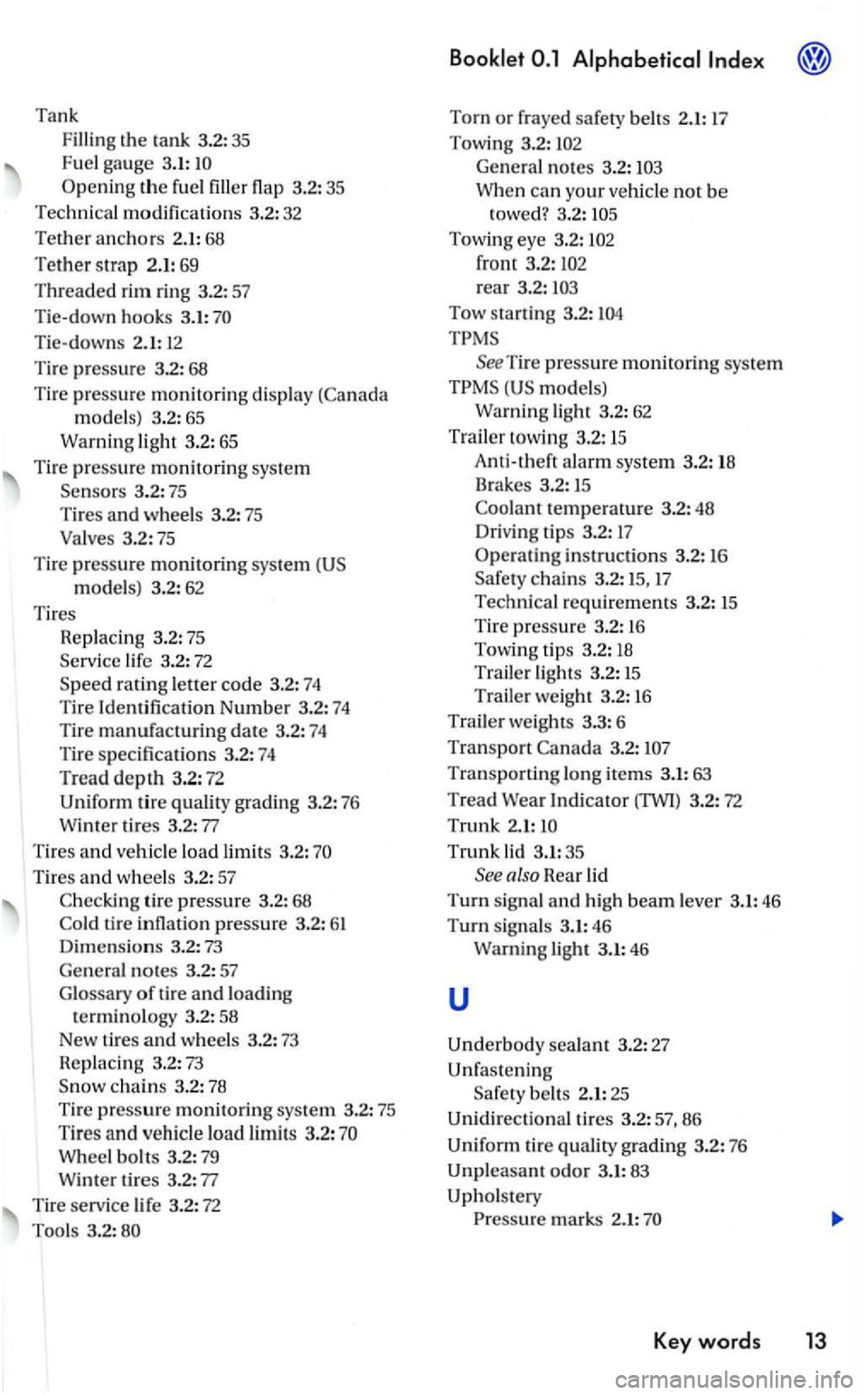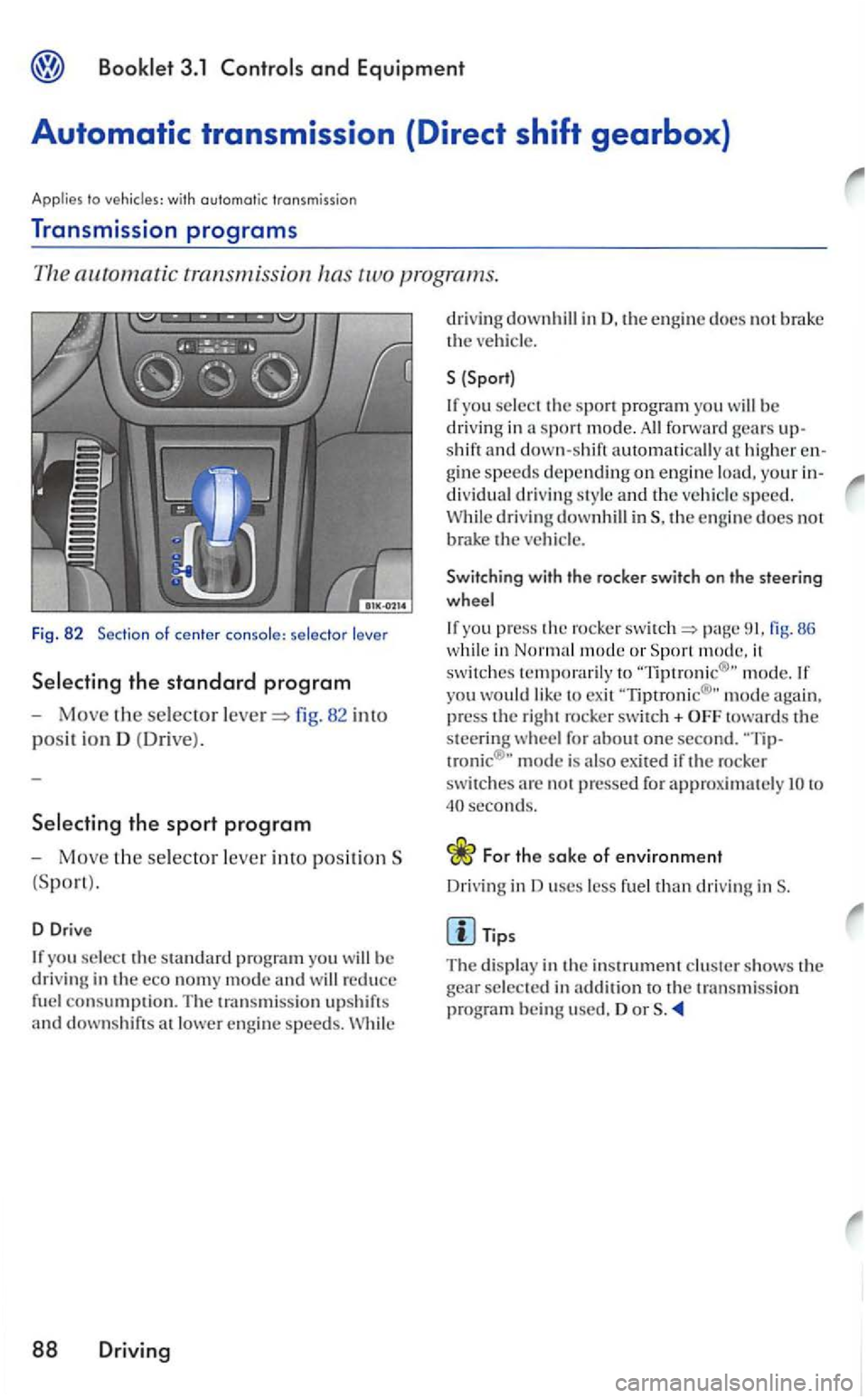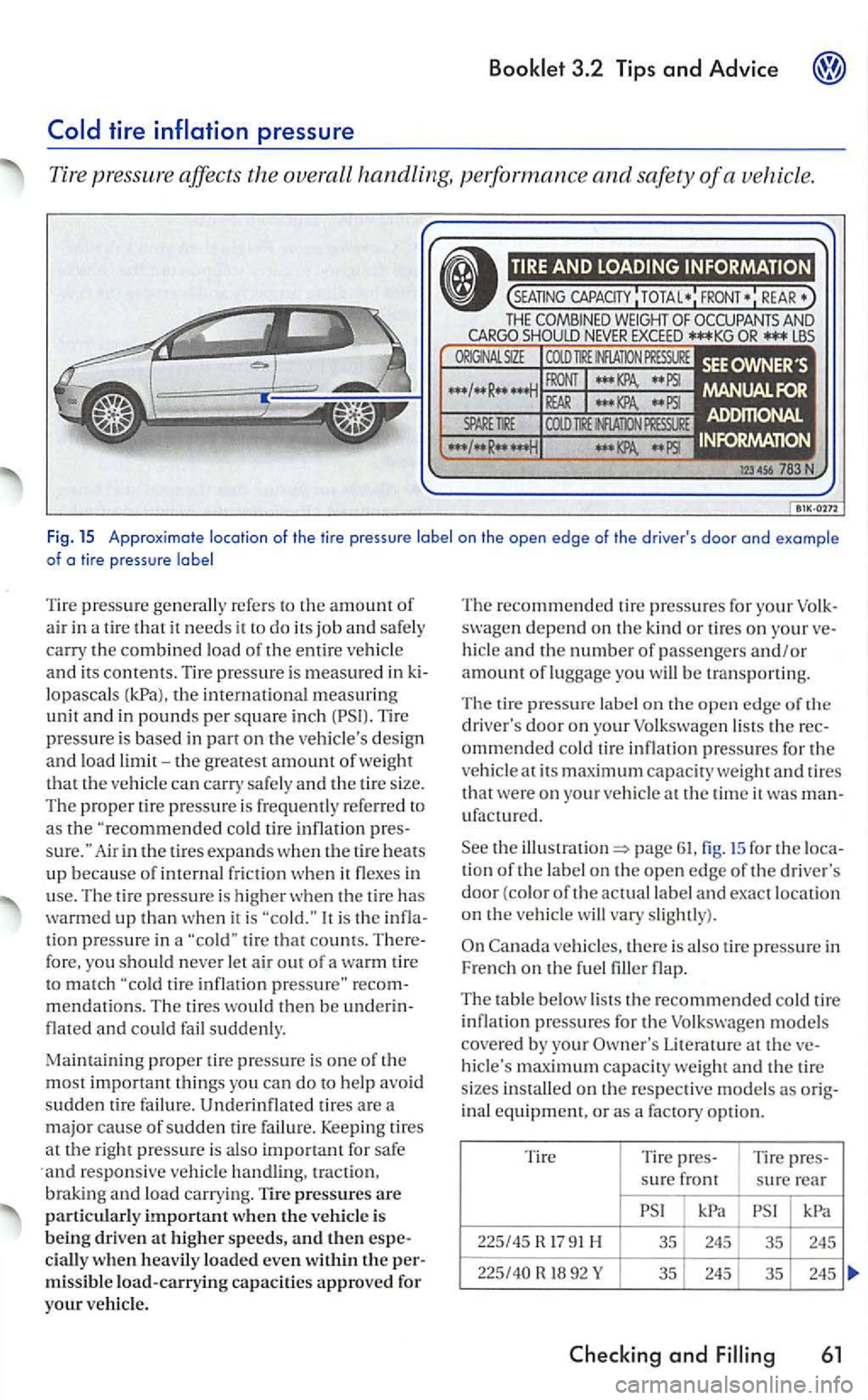Page 16 of 444

Tank
the tank 3.2: 35
Fuel gauge 3.1:
fuel filler flap 3.2: 35
Technic al modifications 3.2:
32
Tether anchors 2.1:68
Tether strap 2.1:
69
Threaded rim ring 3.2: 57
down hooks 3.1:
Tie-dow ns 2.1: 12
Tire pressure 3.2: 68
Tir e pressure monitorin g disp lay
mode ls) 3.2: 65
Warn ing 3.2: 65
T i
re pres sure monitoring sys tem
3.2: 75
Tires and wheels 3.2: 75
Valves 3.2: 75
Tire pressure monitoring system
models) 3.2 : 62
Tires
Repla cing 3.2:
75
life 3.2:72
rating le tter code 3.2: 74 Tire Identification Number 3.2: 74
Tire manufacturing date 3.2: 74
Tire specifications 3.2: 74
Tread
depth 3.2:72
tire pressure 3.2: 68 tire inflation pressure 3.2: 61 Dimensions 3.2: 73
General notes 3.2: 57
Glossary of tire and loading terminology 3.2: 58
New tires
and wheels 3.2: 73 Replaci ng 3.2: 73
ch ai.ns 3.2: 78
Tir e pressure monitoring system 3.2: 75
Tires and vehic le load lim its 3.2: Whee l bolts 3.2: 79
Winter tires 3.2:77
Tir e serv i
ce life 3.2:72
Tool s 3.2:
Torn or fra yed safe ty belts 2.1: 17
Towing 3.2:
General notes 3.2: 103
When can your vehicle not be
t owed? 3.2:
Towing eye 3.2:
See Tire pre ss ure monitoring system
model s)
Warning
light 3.2: 62
Trail er towing 3.2: 15
Anti-theft alarm system 3.2: 18
Brake s 3.2: 15
instructions 3.2 : 16
3.2:
Transporting long items 3.1: 63
Tread Wear Indi cato r
Trunk lid 3.1: 35
See also Rear lid
Turn signa l and high beam lever 3.1:46
Turn signal s 3.1: 46
Warning light 3
.1: 46
u
Underbody sealant 3.2: 27
Unfast ening belts 2.1: 25
Unidirectional tires 3.2:57, 86
tir e qual ity grading 3.2: 76
Unpleasant odor 3.1: 83
Uphol stery
Key word s 13
Page 258 of 444

Booklet 3.1 Controls and Equipment
Automatic transmission (Direct shift gearbox}
Applies to vehicles: with automatic transmission
Transmission programs
82 into
posit ion D (Dri ve ).
Selecting the sport program
-Move the selector lever into positionS
D Dri ve
If you select the standard program you
88 Driving
drivin g downhill in D. the eng in e docs not brak e
the
{Sport)
If yo u selec t th e spo rt pro gram you be driving in sport mod e. forward shift and down-shift automaticall y higher gine s peeds depending on en gin e load, your dividual driving style and the vehicle speed.
While driving downhill the e ngin e doe s not brak e the
Switching with the rocker switch on the steering
w heel
If yo u pres s the rocker page fig. 86 while in mode or Sport m ode. it
sw itches temporarily to m ode. If yo u would like to exit 'Tiptronic® " mod e again,
press the right rocker switch+ towards the
steering w heel for about one second. mode is also exited if the rocker switches not pressed for approx im atel y lO to seconds.
For the sake of environment
Driving in uses less fuel than driving inS.
Tips
The displa y in the inst rum ent clu ster shows the
gear selected in ad dition to the t ra n smission
pro gram being used. or
Page 337 of 444

3.2 Tips and Advice
refers to the amount of air in a tire that it needs it to do its job and safe ly carry the combined load of the entire
on the d esign and load limit-the greatest amount of we ight that the can carry safel y and the tire size.
Th e proper lire pressure is frequently re ferred to a s the "recommended co ld tire inflation
It is the tion pre ssure in a tire that counts .
respo nsiv e
is being driven at higher speed s, and th e n cially w hen heavily loaded even within the missible load-carrying capacit ies approved for your vehicl e. T
he r
ecommended tire pressures for your d epend on the kind or tires on your h icl e and the number of passengers and/or amount ofluggage you will be t ransporting.
Th e tire
pressure label on the open ed ge of th e
driver's door on your Volk swagen lists the ommended co ld tir e infl ation pressures for the
at th e tim e it was ufactured.
page fig. 15 for the tion of the label on the open edge of the driver's door (colo r of the actual label and exact locat ion on the
flap.
The table below lists the recommended cold tire
i nflatio n pressures for the models covered by your maximum capacit y we igh t and th e tire
sizes on t h e res pective models as inal equipment, or as a factory opti on.
T ir e Tire
pres-Tire pres-
s ur e front sure rear
kPa
17 91 35 245 35 245
6
1
Page 388 of 444
75
Tire pressure monitoring syste m models) 62
Tire service life 7 2
Tir
es
H epl ac ing 75
Service life 72
ratin g letter code 74
Tire Identification Number 74
Tire manufacturing date 74
T ire specification s 74
Tread depth 72
Uniform tire quality grading 76
Winter tires 77
Tires and vehicl e load limits
Tires and w heels 57
Checking tir e pressure 68
Co ld tir e infl ation
pressure 6 1
Dimensio n s 73
Ge n
eral notes 57
Glossary
of tire and loading terminolo gy 58
New tir
es and wheels 73 Heplacing 73
Towing
front
r ear
T ire pressure monitoring sys te m
models)
Warni ng light
62
112 index
Traile r towing 15
A
nti-theft a larm system Bra kes
chains 17
Technical requirement s
Ti re pressure 16
Towing tips Traile r lights
Transport Canada
Tread W ear Indicator 72
Trunk lid
Hear lid
u
Underbody seala nt 27
Unidire ct
ional tires 57, 86
U niforrn tire
quality grading 76
v
Vehicl e
Lifting
Location
w
Warnin g light
5
Page 397 of 444

permissible roof weig h t is 165lbs (75 kg).
use th e roof rack syste m specifically designed, tested and approved by Volkswagen.
T he roof weig ht i
ncreases th e weight of th e front and rear axle and correspondingl y reduces th e other lo ad that your ve hicle can carry.
D istribu te the load evenly and do no t exc eed the Roof Weig h t (including the we ight of the roof rack syste m ) o r th e Gross weight .
For
more d e ta ils book let2.1 firs t",
c hapte r dri ving" bookle t3. 1 ''Con
tro ls and Equipment" , chapter and storage."
Tran sporti ng heavy bulky loads on th e roof w ill change th e way th e ve hicl e handles by shifting the ve hicle's center of gravity, changing its aerod ynamics and the way it r eacts to side winds.
Dimensions
T he s pecificatio ns refe r to the basic model. Dif
f erences may occur dependin g on the model
type and optio ns o rd ere d, fo r exa mple. tire s izes.
be careful when parking your vehicl e
i n areas with parking barriers or c u rbs. barriers and cu rbs vary in heig ht. They could damage your bumper
(continued)
t hat is large, heavy, bulky, long or
Always adapt your driving a nd speed to
w hat yo u arc carryi ng on th e roof as well as to
road , traffi c, weath er and wind co nd it io ns.
A lways avoid sudden brakin g or driving mane uve rs.
A lways make su re th a t loads are properly
d istribute d and that heavier it em s are in th e
fro nt.
Neve r exceed the maximum ro of load for the ve hicle, maximum axle loads or th e maximum gross vehicl e w eigh t.
When drivi ng up steep ramps . o n roug h
road s, over curb s, etc. it is important to remember that some part s of your vehicl e, s u ch as
s poiler s or exhaust sys te m components, may be
close to th e g round. Be ca reful no t damage them.
Tips
The figures may be d ifferent if ad ditio nal equipment is fitt ed, for different models, for special
ve hicles and for ot11er